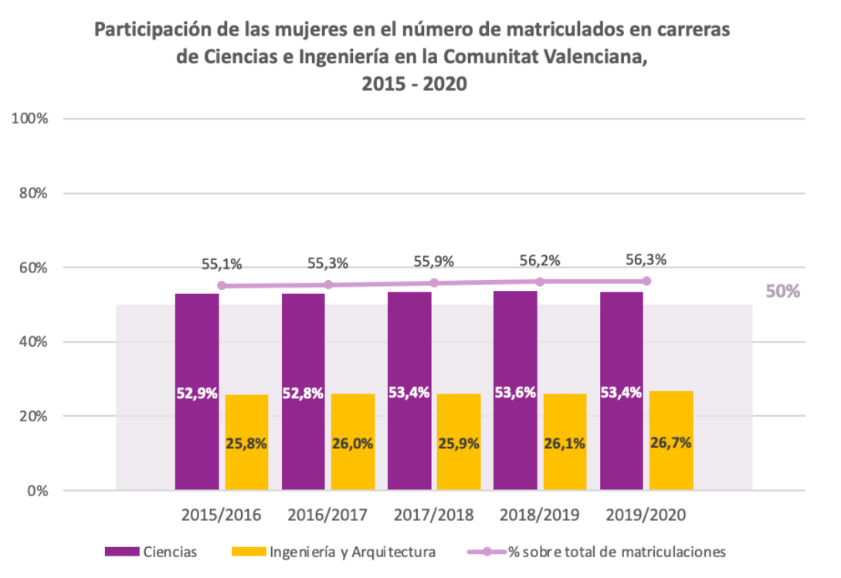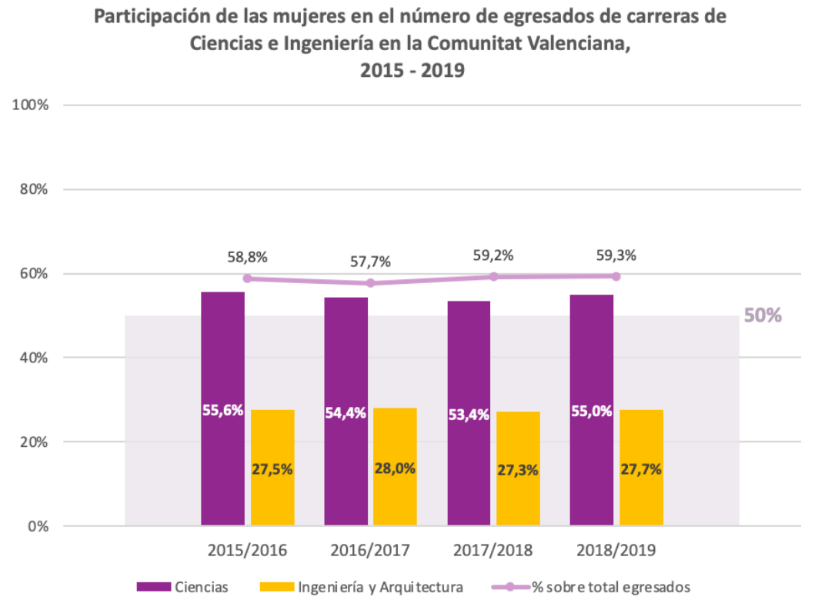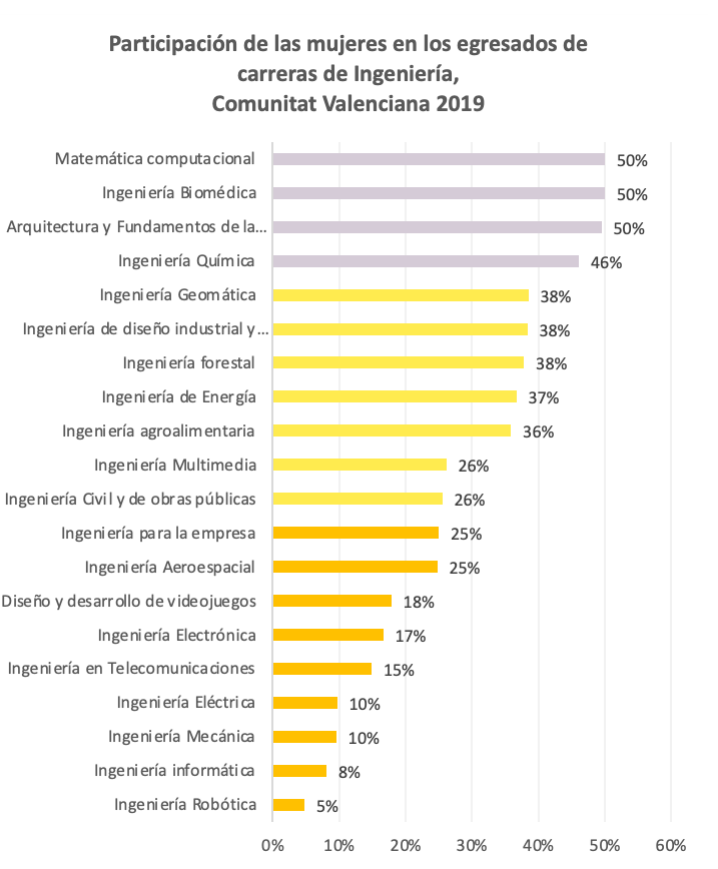After the recent presentation of the report entitled “DIGITAL GAP AND GENDER IN THE VALENCIAN COMMUNITY 2020 Report” (it can be downloaded it here) by the Chair for Digital Gender Gap of Universitat de València. It is interesting to highlight some of the most significant indicators on the evolution and current situation of the digital gap according to gender with regard to training in science and technology careers in the Valencian Community.
Inequalities can affect access to ICT (Information and Communication Technologies), and its use as first and as second elements that define the gender digital gap, which could have an effect on the training of men and women in STEAM (Science, Technology, Engineering and Mathematics) careers. For example, women who decide to go to university are less likely to choose a STEM career than men, and it depends on the access, use and training in ICT that they own and have obtain. This training allows inclusion in society through the use of these technologies, and this is the third element of the gender digital gap research. The 2020 research on Digital Gender Gap carried out allows for the identification of inequalities between women and men with regard to the levels of access, use and training that each population group presents in different indicators selected to evaluate the reality of men and women in the Information Society.
Data on ICT workers and graduate’s careers directly related to this sector show a very low relative participation of women in these fields. The latest data on graduates and enrolments show no evidence of a change in this situation in the coming years.
Although women have a higher participation in university education (59% of graduates in the last year were women), their participation in careers directly related to ICTs is much lower than that of men. While among men, careers in the fields of Science and Engineering accounted for around 38% of university graduates in the last 4 years, among women these careers only accounted for around 14%. That is to say, woman’s total is considerably lower than that of man.


Although women have a high participation in the majority of Science degrees (with participation percentages even higher than 60%, for example in Biotechnology, Biology, Food Science and Technology or Biochemistry), and in some Engineering degrees (balanced participation between sexes in degrees such as Biomedical Engineering or Chemical Engineering), the participation of women in the graduates is particularly low in Engineering degrees, especially those linked to ICT (Robotics, Computer Science, Telecommunications, Electronics) and pure Sciences (Physics and Mathematics), where the percentage of women graduates is less than 20%, such as in Electronic Engineering (17%) or Telecommunications Engineering (15%), and even 10% in Computer Engineering.

The enrolment data would reflect a certain growing tendency, thought slight and slow, in the participation of women in several of these degrees, however, there is also a decline in the participation of women in other degrees, such as Mathematics, for example.
As shown in the 2020 report of the Chair for Digital Gender Gap of Universitat de València and the Government of the Valencian Community, work is currently being carried out on projects that seek to promote the entry of women in careers more closely linked to technologies, for example through the STEM Talks of the Girls4STEM project. However, there is still work to be done to devise new strategies to improve the positioning of women in the ICT sectors and to remove barriers to women’s approach to more specialised technologies in the general population. Some basic directives already exist that can facilitate the decrease of the gender digital gap in scientific and technological areas, but they have not always been implements or have not always been implemented in the workplace. There is also a need for more research to understand the reasons why women of the younger generation are not inclined towards STEM careers.












